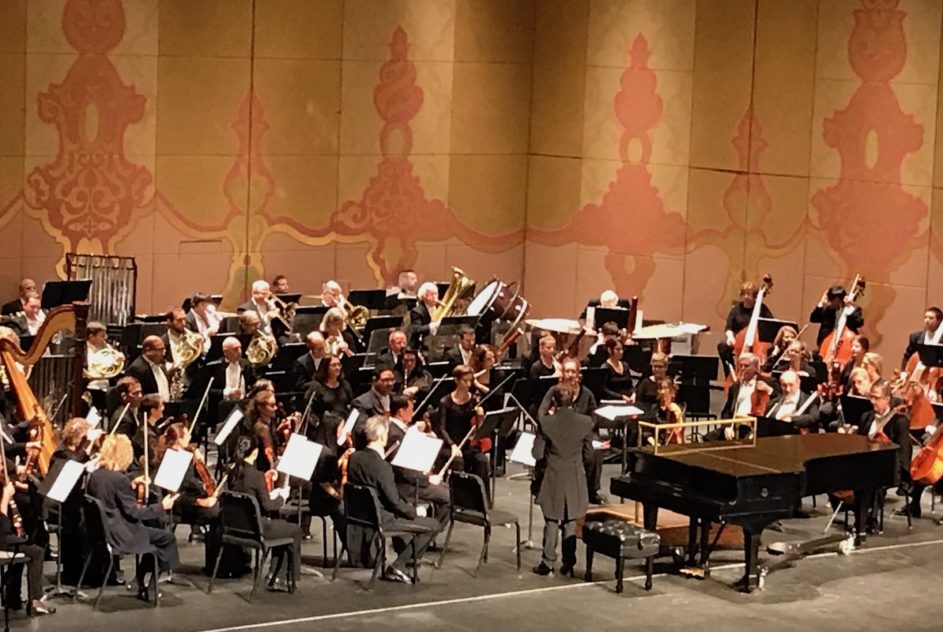Pianist Michelle Cann joined the Knoxville Symphony Orchestra Thursday night for performances of two solo works, an unusual workload for a guest artist.
But considering the unfamiliarity of one of the pieces, Florence Beatrice Price’s “Concerto in One Movement for Piano and Orchestra,” written in 1934, finding a pianist who was offering the piece for her performances was justification enough to program it.
Although not widely known, Price’s music stands out because women composers of her time were uncommon. Additionally, being a woman composer of color, and from Arkansas, in the early 20th century was rare, indeed.
Price’s concerto is a bit of a look at American music of the day, especially including ragtime elements within the European classical music framework.
Cann played the piece beautifully. She has a fluid playing style that makes getting up and down the keyboard flow with ease and grace.
Cann’s approach to playing continued in her performance of George Gershwin’s 1924 “Rhapsody in Blue,” one of the earliest pieces to integrate the burgeoning jazz idiom into the classical music format.
Gershwin, only 27 at the time, didn’t have the skills to translate his piano composition to the instruments of the orchestra. It took the brilliant orchestrator, Ferde Grofé, the orchestrator for the Paul Whiteman Band, which premiered “Rhapsody in Blue,” to create the instrumentation. Gershwin played the piano at the premiere.
From the sultry opening line by solo clarinet, gorgeously played Thursday night by principal clarinet Gary Sperl, the audience was mesmerized.
In Cann’s performance, instead of the jazzy, brash, jumping around, zoot-suit sort of a piece, it was a dreamy, flowing chiffon ball gown. Even though some of the classical purists in the audience may have raised eyebrows over just where Cann’s interpretation was headed, the audience was captivated.
Cann’s version of “Rhapsody” may have been unexpected, but her delivery of it was flawless. At the end, she got the kind of roaring reception one is used to hearing only from Friday night performance audiences, not the more reserved response that comes from the generally older, more conservative crowd on Thursday nights.

Guest pianist Michelle Cann (Photo courtesy of Knoxville Symphony Orchestra)
The concert began with the “Overture” to Leonard Bernstein’s 1956 operetta “Candide,” a musical theater interpretation of Voltaire’s 1759 satirical novel about an illegitimate nephew growing up in the castle of a German Baron, being taught that the environment he is exposed to is the best of all possible worlds.
KSO conductor and music director Aram Demirjian programmed the music as a teaser for the full-scale production of “Candide” the KSO and Clarence Brown Theatre are jointly producing at the end of August in celebration of Bernstein’s 100th birthday.
Bernstein’s music for theater continued the integration of jazz idioms brought into the classical music world by Gershwin. The “Overture” is a rollicking piece that gave several of the musicians in the orchestra moments to shine.
The second half of the concert was a satisfying performance of Aaron Copland’s 1946 “Symphony No. 3,” titled “Quiet City.”
At the time, the American music community needed a defining American symphony that captured the can-do American mentality that had survived the Great Depression and provided the manpower and know-how to win World War II.
There is an internal glow in Copland’s music that is uniquely American. It’s as though Copland sets up a central space, then writes around it music that illuminates the open center.
In the third, one can hear elements from Copland’s 1942 “Fanfare for the Common Man” and 1944 ballet “Appalachian Spring.”
There were several wonderful moments in the symphony for the musicians. Notably among them were a duet for trombone and flute, well played by principal trombone Sam Chen and flutist Jill Waguespack Bartine. In the second movement, a lovely solo by principal oboe Claire Chenette and in the third by principal bassoon Aaron apaza.
As the concluding piece for the KSO’s season, Demirjian seems to have settled into his position at the KSO and the musicians seem to have largely adjusted to his conducting style.

